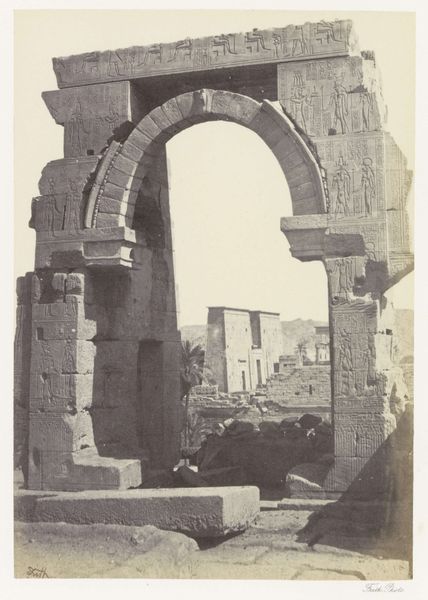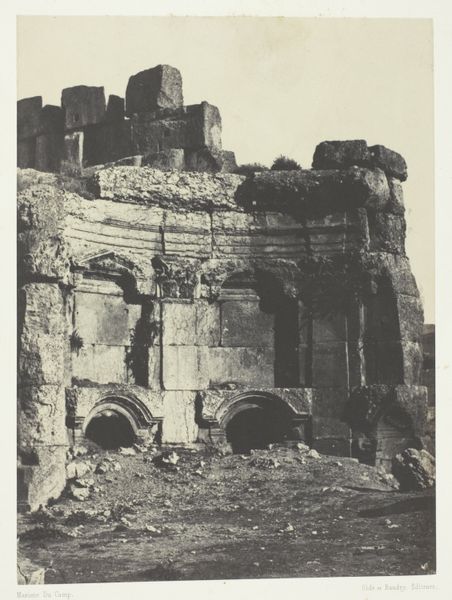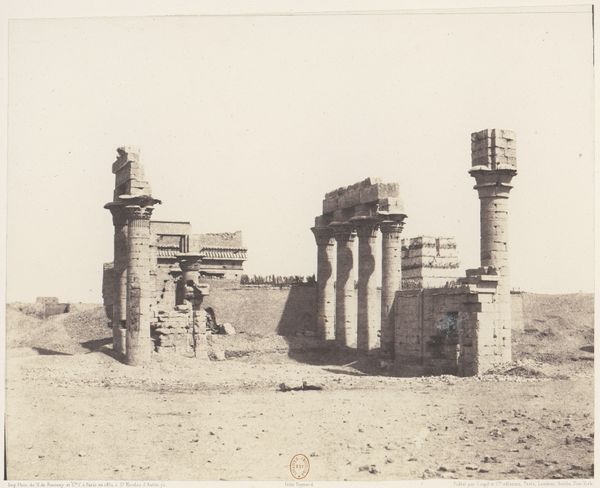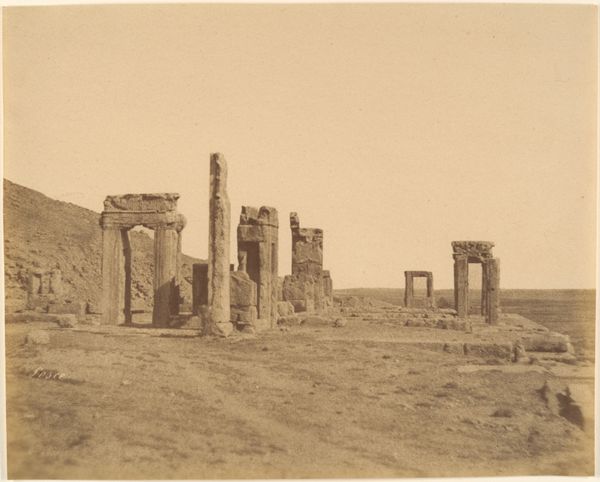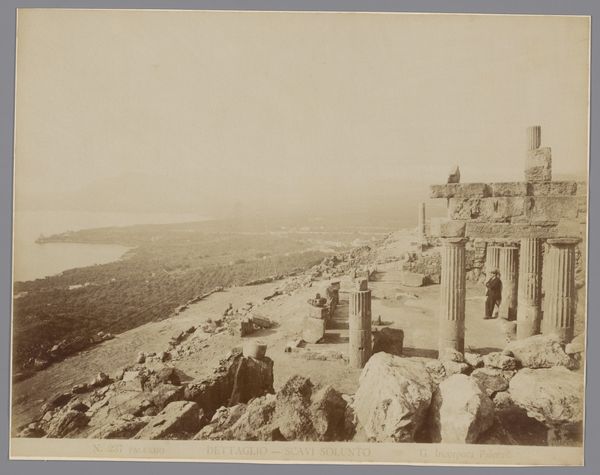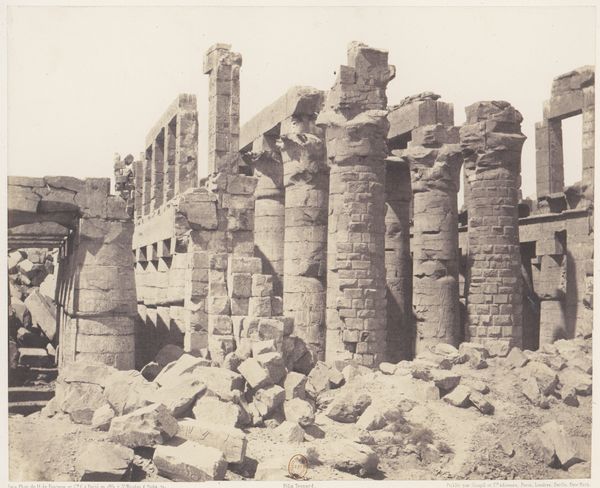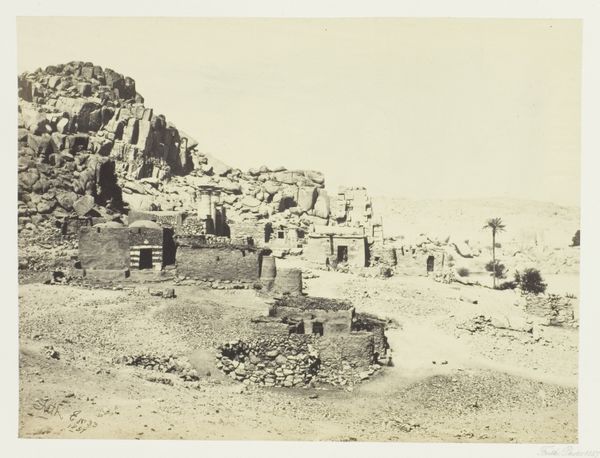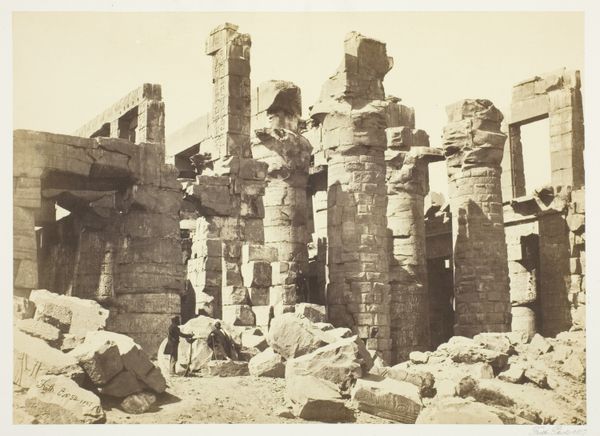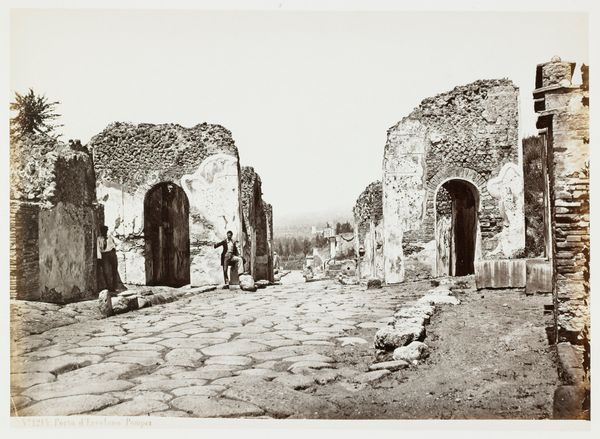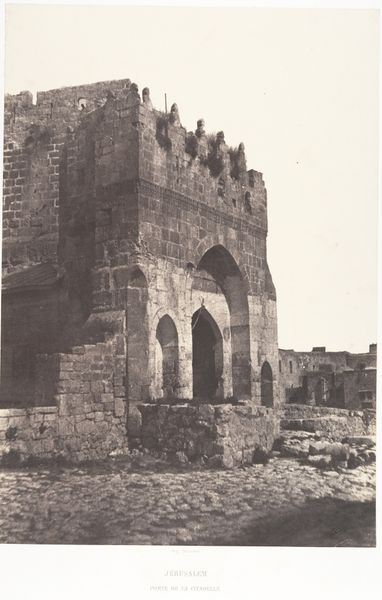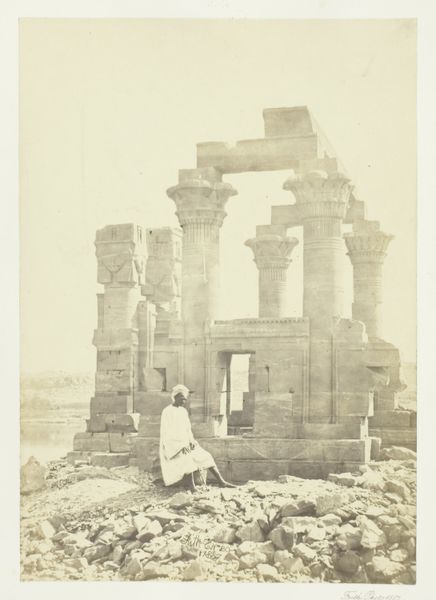
Ruïne van de ingang van de voornaamste zuilenstraat bij Palmyra, Syrië Possibly 1925 - 1926
0:00
0:00
print, photography, collotype, site-specific, architecture
# print
#
landscape
#
photography
#
collotype
#
ancient-mediterranean
#
site-specific
#
architecture
Dimensions: height 141 mm, width 83 mm, height 124 mm, width 184 mm
Copyright: Rijks Museum: Open Domain
Editor: This collotype photograph, possibly from the mid-1920s, is by A.G.A. van Eelde and shows the ruins of Palmyra's main colonnaded street. I’m struck by how fragile and monumental these ruins appear at the same time. What are your thoughts on this image? Curator: Well, for me, it's vital to consider the means of its production, this collotype process itself. The very labor involved in creating such a print transforms our perception of these ancient stones. It ceases to be just about "ancient" history. We're seeing the intersection of material cultures, aren't we? The Roman stonecutters of Palmyra meeting the early 20th-century photographic technician, each dependent on the materiality of their crafts. Editor: So, it's about more than just documenting ruins? Curator: Precisely. Think of the collotype, a relatively inexpensive form of reproduction, making this image of Palmyra available to a wider public. What does that say about access, about who gets to "own" these ruins, even visually? We must consider how photography, especially reproduced as prints, influenced Western perception of ancient sites. Are we looking at objective records, or are we complicit in the ongoing Western consumption of a past produced through colonial and industrial systems? Editor: That's fascinating! I hadn't considered the materiality of the photograph as playing such a significant role. Curator: It’s fundamental. The collotype speaks to a world of mass production, which, while giving greater circulation, equally reduces cultural artefacts to mere images that people can easily acquire and consume. Now, look at how this process transforms stone and monument to something easily contained. It's something of a commodification. Editor: So, by studying the materiality of this print, we also unveil some troubling historical dynamics regarding labor, ownership, and access. It is interesting to think of that as something “site-specific”. Curator: Indeed. That's precisely the challenge materialist art history brings.
Comments
No comments
Be the first to comment and join the conversation on the ultimate creative platform.
